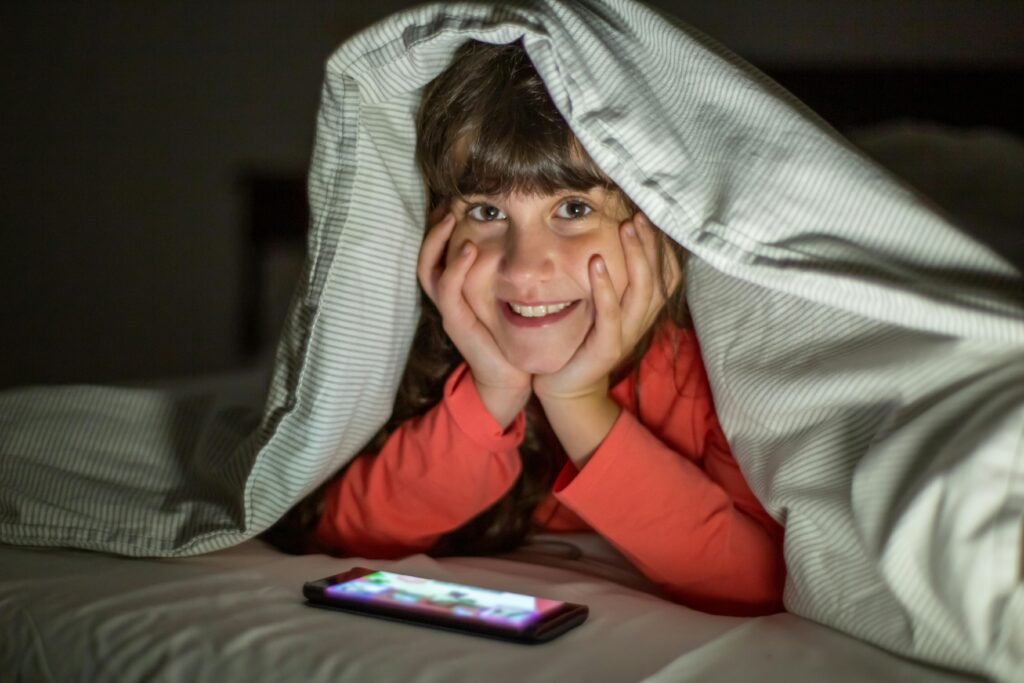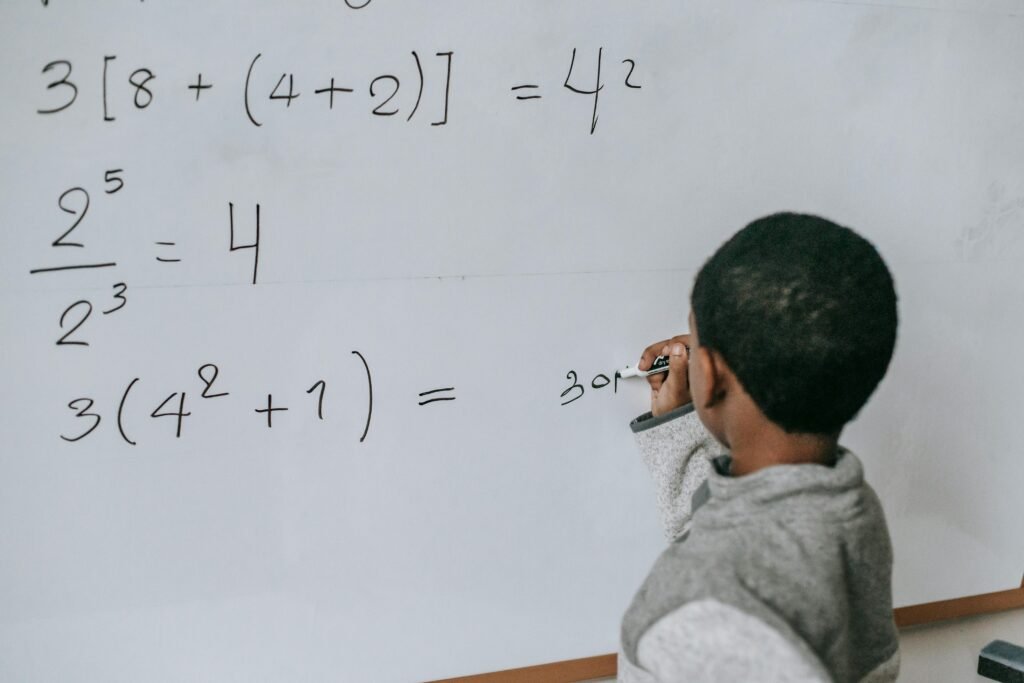We all love our screens. From phones to tablets, from video games to YouTube, screens are everywhere. For kids, it’s a big part of how they play, learn, and even talk to friends. But with screen time going up every year, many parents and teachers are starting to ask: Is all this screen time hurting school grades?
Students who spend more than 4 hours daily on screens score, on average, 20% lower in math and reading tests.
That’s a big number. Twenty percent is not just a small drop—it’s the difference between an A and a C. When kids spend over four hours a day on screens, especially for things like gaming, scrolling, or watching videos, their brain doesn’t get the rest or exercise it needs to focus well in class.
Think about it like this: Imagine your child is sitting through class, but their brain is still in “scroll mode.” Fast, flashy videos and quick dopamine hits from games or social media train the brain to seek fast rewards.
But school is different. It needs patience. It needs deep thinking. It needs focus. These are things high screen time quietly eats away at.
The solution isn’t to ban screens altogether. Instead, try cutting it down slowly. Start by tracking how much time your child spends on screens each day. Most phones and tablets have built-in tools that show daily screen time.
Once you know the number, you can work together to bring it down—maybe to three hours a day, then two.
Use that freed-up time for activities that grow the brain. Reading, outdoor play, puzzles, and even chatting with family can rebuild the parts of the brain that school depends on. Over time, you’ll likely notice better focus, more interest in homework, and better grades.
Children with over 2 hours of recreational screen time per day are twice as likely to receive poor grades.
Not all screen time is equal. Watching a science video is different from watching cartoons or swiping through social media. But when kids go beyond two hours of recreational screen time—meaning time not spent learning—they double their chances of doing poorly in school.
Here’s why: recreational screen time eats into the hours that should be spent learning, resting, or being active. And those things are key for doing well in school.
Poor grades don’t show up overnight. First, homework gets missed. Then, test scores fall. Soon, your child might start to feel like school is “just too hard.” But it’s not that they’re not smart—it’s that their brain is too tired or distracted to keep up.
You can help by creating “screen-free zones” at home. For example, no screens at the dinner table or during homework time. Encourage your child to take breaks every 30 minutes when doing homework—but make those breaks screen-free. Let them stretch, doodle, or go outside for a bit. You’ll be amazed how much this helps recharge their brain.
Keep screen time for evenings or weekends, and even then, choose content that adds value. Educational games, documentaries, and skill-building apps can still be fun—without hurting school performance.
High schoolers using screens for more than 5 hours daily are 50% more likely to report low academic performance.
Teenagers often use screens to stay connected. Social media, games, and videos are big parts of teen life. But once screen use passes the 5-hour mark each day, things start to shift in the wrong direction. At that point, teens are 50% more likely to say that their grades are slipping.
This doesn’t mean every teen who watches Netflix will fail school. But the risk is real. When screens take over, school takes a backseat. Homework gets rushed. Bedtime gets pushed. Study time disappears. Even mental health can take a hit, making it harder to focus or stay motivated.
If your teen is in this boat, don’t panic. You don’t need to fight about it or take the phone away. Instead, have an honest talk. Ask them how they feel about school. Share the stat with them. Let them know you want to help—not control.
Then work together to build new habits. Maybe they agree to do homework before using any screens. Maybe they try screen-free mornings or limit social media to certain hours. Set a weekly goal, and when they meet it, celebrate. Over time, they’ll feel the difference—in their focus, confidence, and grades.
Students who limit screen time to under 1 hour per day score 10-15% higher on standardized tests.
Here’s some good news. Students who use screens less than 1 hour per day don’t just avoid problems—they actually do better. Their test scores are 10 to 15% higher, which shows that cutting back on screen time can really pay off.
Why does this happen? Because with less screen time, there’s more time for sleep, reading, asking questions, and thinking deeply. These are the things that build strong learning.
Imagine two students. One scrolls on their phone for 4 hours a day. The other only uses their tablet for 30 minutes to check homework or watch a science video. Who’s likely to remember more from school? Who gets better sleep and can focus better in class? The second one, every time.
If you want to try this with your child, make it fun. Turn it into a 7-day challenge. Can your child stay under 1 hour of screen time each day for a week? Make a chart. Offer small rewards. Talk about how they feel each day.
Are they more focused? Do they feel more creative? Let them be part of the change, and they’ll be more likely to stick with it.
Over time, those test score gains aren’t just numbers—they’re a reflection of a better, sharper, more confident mind.
Screen time above 3 hours daily is associated with a 40% drop in homework completion rates.
One of the quietest ways screen time affects grades is by eating into homework time. When students spend more than 3 hours on screens every day, they complete 40% less homework.
Homework isn’t just about grades—it’s about practice. It helps kids remember what they learned. It builds responsibility and time management. When screen time gets in the way, it’s not just the homework that suffers—it’s everything school is trying to teach.
If your child struggles to finish homework, check the screen time first. Are they using their phone while doing math? Are they switching between YouTube and reading? If yes, that’s a sign the brain is jumping too much to focus.
Try creating a simple homework routine. Set a “no screen” block—maybe 30 to 60 minutes each evening. Phones go in a basket. TV stays off. The goal is focus. After homework is done, screen time can begin. You can even give back screen time as a reward for finishing work on time.
Homework doesn’t have to be a battle. With fewer screen distractions, it can actually feel faster, easier, and less stressful for everyone.
Teens who use screens for non-academic purposes after 9 PM see a 25% reduction in test scores the next day.
Late-night screen time is one of the most common habits among teens. Whether it’s texting friends, watching videos, or just scrolling, it feels like a way to unwind. But the research is clear—when teens use screens after 9 PM, their test scores can drop by 25% the next day.
Why? Because screens mess with sleep. The light from screens tricks the brain into thinking it’s still daytime. That means it takes longer to fall asleep, and even if they do fall asleep, it’s lighter and less restful. By morning, they’re tired, their brain is foggy, and test scores suffer.
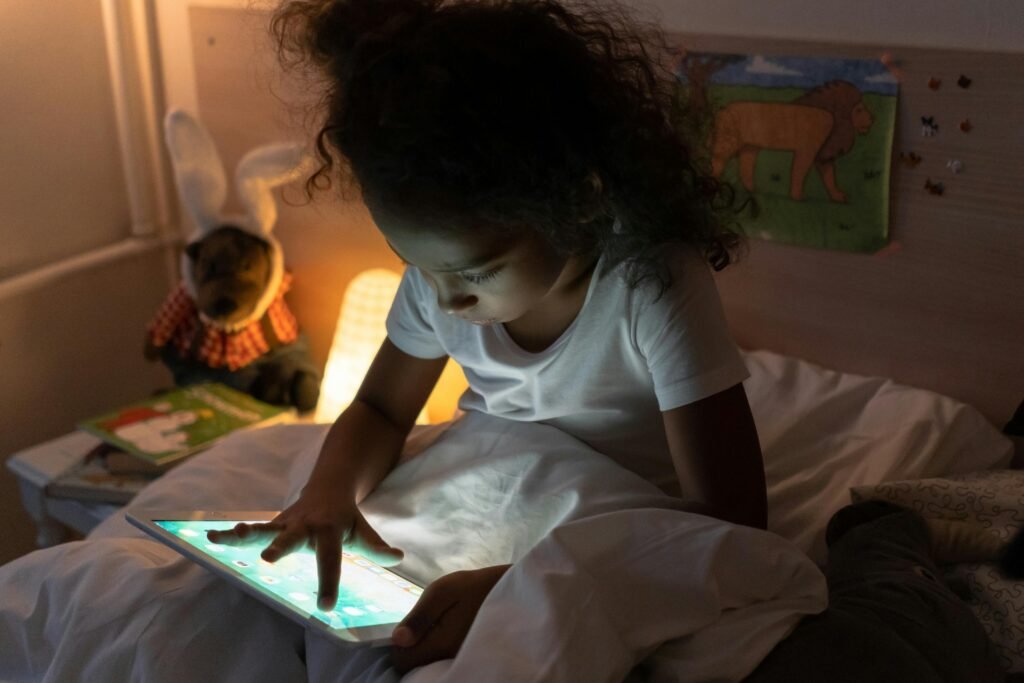
One night of bad sleep might not seem like a big deal. But when it happens regularly, those 25% drops start to add up. Suddenly, your child is falling behind in math, struggling to remember reading passages, or zoning out in class discussions.
The fix? Focus on evening routines. Create a “screen curfew” at home—no screens after 9 PM. Instead, encourage relaxing, screen-free activities like reading, drawing, or journaling. Even 30 minutes of wind-down time before bed can make a big difference.
If your child needs help waking up or focusing in school, this might be the first place to look. Better sleep = better brain = better grades.
Only 18% of students who use screens over 6 hours daily report having “good” academic performance.
Let that sink in: only 18% of heavy screen users feel like they’re doing well in school. That means 82% are struggling—either with focus, memory, grades, or motivation.
Using screens for 6+ hours daily doesn’t leave much time for anything else. Between classes, homework, meals, sleep, and life in general, something has to give. And most of the time, it’s learning that suffers.
It’s not just about time. Heavy screen use also affects how the brain works. Fast-paced media trains the brain to crave speed and novelty. But school needs focus and slow thinking. Over time, the mismatch leads to poor performance—and worse, a drop in self-confidence.
If your child falls into this 6+ hour group, it’s time to re-balance. Start by observing their habits without judgment. What apps take up the most time? Is the screen mostly for games? Social media? Watching others play games?
Then, work together to set screen-free times in the day—especially around homework, meals, and bedtime. Replace that time with things that build brain power and emotional strength. It doesn’t have to be boring. Let them cook, build something, write a story, or even teach you something they learned at school.
Change won’t happen in a day. But over time, confidence grows. And when confidence returns, so do the grades.
Reducing screen time by 1 hour per day improves attention span by 12%.
What would you do to boost your child’s attention by 12%? A fancy tutor? Expensive programs? You might not need those—just reducing screen time by one hour can do it.
Attention span is the key to learning. Kids with strong attention can focus longer in class, understand more, and stay calm even when things get tough. But too much screen time makes attention weaker. The brain gets used to fast cuts, flashy scenes, and endless scrolling. Real life feels slow. School feels hard.
The good news? The brain can bounce back. One hour less screen time a day can re-train attention muscles. Kids may start focusing longer, listening better, and finishing tasks with fewer reminders.
To make this happen, don’t frame it as a punishment. Make it a family goal. Everyone tries to cut screen time by an hour—yes, even the adults. Set up a family screen tracker on the fridge. At the end of each day, check your progress and celebrate wins. You could even build a reward system based on days completed.
As attention gets stronger, learning becomes easier. That confidence boost spills over into every part of your child’s life—school, friendships, and even their hobbies.
Elementary students with screen time limits perform in the top 25% of their class on average.
This is big: kids in elementary school who have clear screen limits at home are way more likely to be in the top quarter of their class.
Early school years are where learning habits are formed. It’s when kids build the foundation for reading, math, problem-solving, and more. If screen time is unlimited, kids lose precious time for brain-growing activities like play, reading, conversation, and curiosity.
Kids with structure do better—not because they’re “naturally smart,” but because they’re getting the right fuel. They sleep better, stay focused longer, and approach learning with more patience.
Parents can build this kind of structure without making home feel like a prison. Start by setting simple daily screen rules. For example, screens only after homework. Or, max of 1 hour per day. Make sure these rules are clear, fair, and followed by everyone in the house—including older siblings.
Also, offer lots of fun alternatives. Puzzles, board games, cooking, crafts—these all grow the brain and build school skills without feeling like “work.” And when your child starts doing better in school, point it out. “Look how well you did on that spelling test! I bet that reading time is really helping.”
Success feels good. And once kids taste it, they want more.
Students using screens for less than 2 hours/day have 30% higher GPA than those using more than 6 hours.
Yes, 30% higher GPA. That’s a huge difference. It’s not about being lucky or naturally smart—it’s about habits. And the biggest habit that shows up in the GPA? Screen time.
When students spend less than 2 hours a day on screens, they get better sleep, more homework done, and more time to think deeply. Over time, this leads to better grades in every subject.
Compare that to kids who spend over 6 hours on screens. They’re often rushed, tired, distracted, and frustrated with school. Their brains are doing too much at once and not finishing any one thing well.
If your child’s GPA is lower than you’d like, this is a powerful place to look. Cutting back to under 2 hours a day might seem hard at first, but it’s possible. Use apps to track screen time. Have screen-free zones. Be a role model with your own screen use. Make it a family challenge.
Help your child notice how they feel. Are they more relaxed with less screen time? Are their grades rising? Let those little wins build into a new rhythm. Over time, those small changes create a smarter, stronger student—one who is proud of their growth and ready for more.
High screen time correlates with a 60% higher risk of school disengagement.
When a child or teen is disengaged at school, you can feel it. They stop caring about homework. They stop raising their hand. They sit in class but don’t really listen. This isn’t laziness—it’s usually a sign their brain is overwhelmed or distracted. And screen time plays a big part in that.
Kids with high screen time are 60% more likely to become disengaged from school. That’s a big deal. School isn’t just about facts—it’s about developing curiosity, asking questions, and building the grit to keep going when things get tough. High screen use chips away at that.
The reason is simple: screens, especially games and social media, give instant rewards. School doesn’t. Learning takes time. It’s a slow process. When kids get used to the “fast” rewards of screens, the “slow” rewards of school feel boring. Over time, this leads to frustration, boredom, and even giving up.
If your child is starting to show signs of disengagement—slipping grades, lack of interest, no motivation—look at screen habits. Talk to them, not with blame, but with curiosity. Ask: What do they enjoy on screens? What stresses them out about school? Let them share without fear.
Then slowly rebalance. Help them see learning as fun again. Do science experiments together. Watch documentaries as a family. Build something with math. Show that learning happens outside school too. As you reduce screen time and bring back joy in learning, engagement starts to grow again—one spark at a time.
More than 70% of low-performing students report watching TV or using devices during homework.
Homework is a time for focus. But what happens when kids are texting, watching shows, or checking social media while doing it? According to research, 70% of students who get poor grades admit to using screens during homework.
That’s not a surprise. Imagine trying to read a book while a TV show plays in the background. Or solving a math problem while your phone keeps buzzing. It’s nearly impossible to focus fully on both. The result? Homework takes longer. It’s done with less care. And the brain doesn’t fully absorb what it’s learning.
The first step is to help your child understand this. Show them how multitasking hurts their brain. You can even do a simple test—give them a few questions to answer while texting, and then a few with no distractions. Compare the results together. Let them feel the difference.
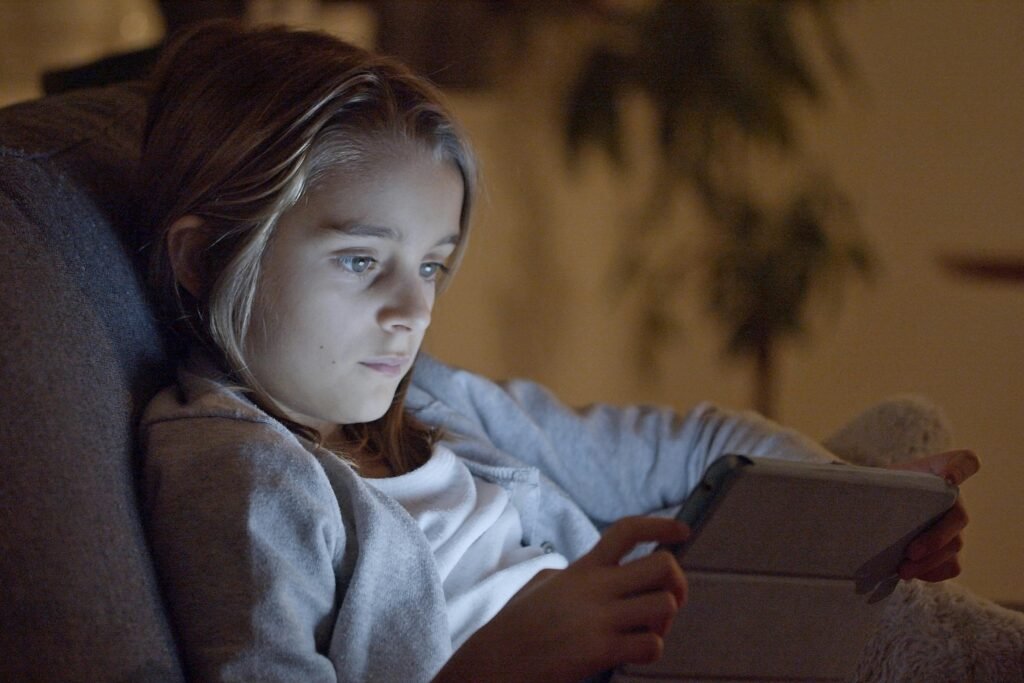
Then set up a distraction-free zone for homework. A clean, quiet table. No devices except what’s needed for the assignment. If they need a break, take one—but keep it off-screen. Over time, they’ll see that homework gets done faster, easier, and with better results when their full focus is in the game.
Kids who spend screen-free mornings perform 22% better in morning school tasks.
Mornings matter. What kids do before school shapes how they think, feel, and perform once they’re in class. If their morning is calm, screen-free, and focused, their brain arrives at school ready to learn. And the stats prove it—kids with screen-free mornings do 22% better on morning schoolwork.
Now think about most mornings. Kids waking up, grabbing a tablet, watching cartoons or scrolling TikTok before even brushing their teeth. By the time they get to school, their brain is already distracted and overstimulated. It’s hard to shift from that to reading, writing, and learning.
Screen-free mornings don’t have to be dull. Play music during breakfast. Let kids help make lunch. Talk about something exciting for the day. Get them moving—maybe a stretch, a walk, or dancing for five minutes. This builds a calm and alert brain, ready to take on the day.
You can even create a family rule: no screens until after school. At first, they may resist. That’s okay. Be patient and consistent. Once they start seeing better focus and fewer morning meltdowns, they’ll get it. And those better mornings? They set the tone for a better day, and better grades too.
Screen use before bedtime is linked to shorter sleep and poorer academic performance in over 65% of teens.
Sleep is the secret weapon of learning. A good night’s sleep helps the brain lock in what it learned during the day. But here’s the problem: 65% of teens who use screens before bed sleep poorly and do worse in school.
Why? The blue light from screens stops the brain from making melatonin, the sleep hormone. The brain thinks it’s still daytime, so falling asleep takes longer. The sleep they do get is lighter and shorter. By morning, they’re tired—and tired brains don’t learn well.
Many teens say they can’t sleep without their phone or tablet. But the truth is, screens are what’s keeping them from sleeping in the first place.
Try this: set a “tech bedtime” 30 to 60 minutes before actual bedtime. During that time, no screens at all. Offer alternatives—journaling, coloring, reading, quiet music. Keep devices outside the bedroom if possible.
You can’t always control how much homework a teen gets or how early school starts. But you can shape their bedtime habits. Better sleep isn’t just about rest—it’s about brain power. And when your teen sleeps well, school feels easier and more doable.
Multitasking with screen devices while studying reduces learning retention by 40%.
Many students think they can multitask. They believe they can watch videos, reply to messages, and do schoolwork at the same time. But the truth is harsh—doing this reduces how much they remember by 40%.
When the brain switches between tasks, it doesn’t do any of them well. Reading a science passage while texting or checking Instagram breaks the brain’s focus. Information doesn’t go into long-term memory. Even if they finish the assignment, they haven’t actually learned much.
To fix this, teach your child about single-tasking. One thing at a time. Turn off notifications. Keep only the apps or websites they need for studying. If they need music, go for instrumental tunes that don’t distract.
Also, use a timer. Try the “focus 25, break 5” rule. Work for 25 minutes with full focus, then take a 5-minute break. Repeat. This helps the brain stay fresh and productive without zoning out or giving in to distractions.
If your child starts doing this, they’ll finish their work faster, remember more, and feel less stressed. It’s not about working harder—it’s about working smarter.
Students who check their phone more than 10 times during study sessions show 25% lower comprehension.
This stat is powerful. It tells us that just checking a phone 10 times while studying—not even using it for long—can drop comprehension by 25%. That’s a big hit to understanding, and it affects every subject.
When a student studies, they’re trying to build mental connections. But each time they check their phone, the brain has to shift gears. It stops focusing on the material and starts thinking about the message, the alert, or the video. When it tries to come back, it has to restart that focus all over again.
This “attention switching” wears the brain out. It feels like multitasking, but really, it’s just fast switching that ruins deep thinking.
Help your child see this in action. Try a challenge: have them study for 15 minutes with their phone beside them, and another 15 minutes with their phone in another room. Ask them what they remember from each session. They’ll likely notice they understood more without the phone around.
The fix is simple, but not always easy. Ask them to put their phone in a different room or on airplane mode while studying. If they use it for music, keep it on “Do Not Disturb.” Over time, they’ll get used to the quiet—and they’ll learn way more, faster.
Schools that implement screen-free zones see an average 15% improvement in student grades.
This is encouraging. When schools say “no screens” in certain places—like during lunch, in the library, or before class starts—students actually do 15% better in grades on average.
Why does this work? Because screen-free zones give the brain space. Space to think, to talk, to reflect. Without screens, kids are more likely to read, discuss classwork, or just slow down. This kind of mental break helps them absorb what they’ve learned and prepare for what’s next.
You can do this at home too. Create screen-free spaces like the dinner table, the bedroom, or the car during school drop-off. These small changes give your child’s brain extra space to process ideas, ask questions, and have real conversations.

Talk to your child’s school too. Ask if they use screen-free zones, and if not, suggest it. A few screen-free hours each day can help kids learn better, connect more, and feel less overwhelmed. And better learning at school always leads to better results at home.
Excessive screen time can delay homework start time by 45 minutes or more.
Sometimes the problem isn’t that kids avoid homework—it’s that they delay starting it. Screens are one of the biggest reasons. When screen time stretches too long, kids lose track of time. The energy to start homework fades. On average, homework gets delayed by 45 minutes or more.
This delay can turn into stress. Suddenly it’s late, and your child is rushing through math, forgetting instructions, or skipping questions just to finish. The quality suffers. Their confidence drops. And school starts to feel harder than it really is.
You can help by setting a “transition routine” between screen time and study time. For example, after 30 minutes of free screen time, they might have a 10-minute break to stretch or have a snack—then it’s homework time. This helps reset the brain.
Also, try setting a fixed “homework hour.” Maybe it starts at 4 PM every weekday. Once it becomes a habit, there’s less arguing, less delay, and more peace in the home. That 45 minutes gained each day could be the boost your child needs to stay on top of school.
1 in 3 students admit screens distract them from school tasks “most of the time.”
That’s a big number—1 in every 3 students say they’re distracted by screens during school tasks most of the time. And they’re not wrong. Distraction isn’t always loud. Sometimes it’s just checking one message, one quick video, one notification. But that’s all it takes to pull focus away.
When this happens often, kids fall behind. They may miss key points in lessons. Forget what the teacher said. Lose track of homework instructions. It builds up slowly until they feel lost—and then, school feels impossible.
If your child struggles with this, don’t scold them. Instead, help them name the distraction. What pulls them in? Is it YouTube? Group chats? The feeling of needing to reply right away?
Once they name it, you can work together to manage it. Use tools like screen timers or app blockers during school hours. Encourage screen-free focus times, even for 20 minutes at a time.
Also, build up their self-awareness. Ask them to check in with themselves: “Am I doing what I planned to do?” Over time, they’ll learn to catch distractions before they take over. That’s a skill that will help them not just in school—but in life.
Reducing screen time has been shown to improve academic motivation in 64% of students.
Sometimes, when grades drop, it’s not a skill problem—it’s a motivation problem. And here’s the surprising truth: 64% of students say their school motivation goes up when they reduce screen time.
That’s because motivation needs clarity. The more distractions a child has, the harder it is to feel driven. Screens crowd the brain. They offer fast rewards, which make school feel slow and boring. But when those screens are turned off for a while, something amazing happens: kids start to get curious again.
They remember what it feels like to finish a tough problem. They feel proud of themselves. That small spark of motivation grows with every little win.
You can boost this by helping your child set small goals. Maybe it’s reading for 10 minutes without picking up the phone. Or finishing one subject’s homework before checking a screen. Celebrate each win—because those wins matter.
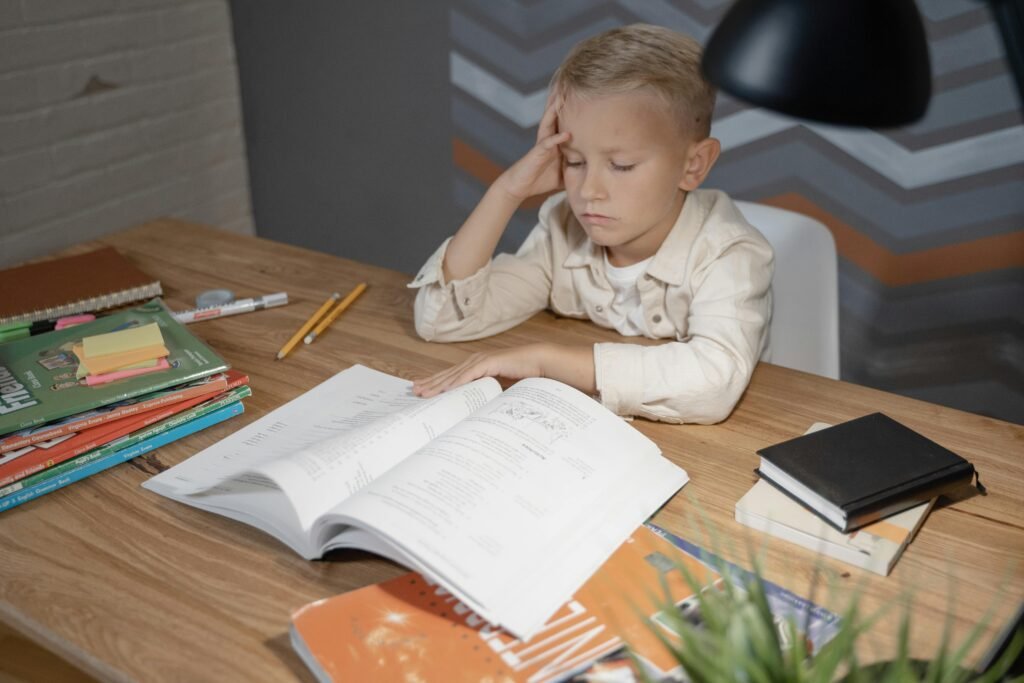
Make screen-free time feel rewarding, not restrictive. Encourage your child to use that time to explore something they care about—whether it’s building with Legos, drawing, cooking, or just chatting with you. When they feel in control, motivation becomes natural.
Kids using educational apps for more than 30 minutes still perform worse than those who read books.
This one surprises a lot of parents. We often think, “It’s an educational app—it must be helping.” But research shows that when kids spend more than 30 minutes on educational apps, they still perform worse than kids who simply read books.
Here’s why: reading books builds deep focus, imagination, and language skills. It forces the brain to slow down, follow a story, and think about what’s being said. Most apps, even the educational ones, are fast-paced. They flash bright colors. They use game-like rewards. That keeps kids clicking, but doesn’t always help them understand.
Educational apps can still be part of learning, but they shouldn’t take over. If your child is using them for long stretches, it might be time to balance things out. Introduce daily reading time—20 to 30 minutes with a real book. Not on a screen. Let them pick what they read. Even comics or fun facts count.
Pair this with a quiet space and a bit of your time to ask, “What did you read today?” Talking about the book boosts comprehension even more. Over time, this reading habit grows stronger minds—and stronger grades.
52% of parents report their child’s grades improved after reducing screen time.
Sometimes we just need proof that change works. And here it is: over half of parents—52%—say their child’s grades went up after cutting back on screen time.
That’s not a small group. These are real families who saw real results just by making small changes. Less screen time means more time for homework, sleep, reading, and simply being present. That leads to better habits, better thinking, and better results.
If you’re feeling unsure about whether to take that step, start simple. Pick one thing to change this week. Maybe it’s no screens before school. Or screens only after homework. Or switching out one hour of YouTube for outdoor play.
Talk with your child about the why. Let them be part of the plan. Tell them you’re trying it for a week—and then checking in to see how it feels.
You don’t have to do everything at once. Just take one step. And when the grades start to rise, celebrate it. Let your child feel proud. That pride is fuel—it keeps the momentum going and makes the next step even easier.
84% of teachers believe screen addiction negatively affects student performance.
When teachers—those who work with kids every single day—are asked about screen time, their message is loud and clear. 84% say screen addiction is hurting student performance.
That’s nearly every teacher in every classroom. They’re seeing kids who can’t sit still, who lose focus quickly, who struggle with basic problem-solving—all because their brains are over-reliant on fast digital input.
It’s not about blaming kids. It’s about recognizing what they’re up against. Many students come to school already tired from late-night screen use. Others are anxious from social media drama. Some simply find it hard to adjust from a fast-moving digital world to a slow-paced classroom.
As a parent, you can support teachers by setting boundaries at home. Keep a consistent screen schedule. Talk openly with teachers. Ask how your child is doing in class and whether they seem focused or distracted.
More importantly, team up with your child. Show them that you, their teacher, and everyone else wants the same thing: to help them succeed. When a child feels supported on all sides, school becomes less stressful—and more rewarding.
Students with high screen time are 3 times more likely to skip assignments.
Assignments are how students show what they’ve learned. But when screen time goes up, those assignments start to slip. Kids with high screen time are three times more likely to skip homework or classwork altogether.
Why does this happen? Because high screen time builds a habit of delay. The brain gets used to the quick “hit” of screen content. Writing a report or finishing a worksheet feels slow, hard, and not fun. So, it gets pushed aside. And the more assignments a student skips, the more anxious and behind they feel.
Eventually, it’s not just grades that suffer. It’s confidence. It’s interest. It’s their entire relationship with learning.
If this is happening with your child, it’s okay. You’re not alone—and it can be turned around.
Start small. Help them finish one missed assignment, just one. Turn off all screens while they do it. Sit with them if needed. Then build from there. Maybe next time it’s two assignments. Maybe next week it’s finishing work on time.
Each time they complete something, praise the effort, not just the result. “I’m proud of how you focused just now.” “You really pushed through even though you were tired.” These words go a long way—and help them believe they can do it again.
More than 40% of teens say social media distracts them from studying.
Teens are smart. They know what’s getting in their way—and many of them say it out loud. Over 40% of teens admit that social media distracts them when they’re trying to study.
Social media isn’t just an app. It’s a whole world. Likes, comments, stories, and messages pull attention fast. One quick check turns into 30 minutes. A break from studying becomes a lost hour. And that time can’t be replaced.
But here’s the good news: because teens already recognize the problem, they’re more open to fixing it.
Talk with your teen about their study routine. Ask if they want help focusing. Suggest small tools that can make a big difference—like putting their phone in another room, turning off notifications, or using a focus timer app.
Also, offer to check in after their study session. Not to quiz them, but just to see how it went. This builds accountability, and it reminds them they’re not doing it alone.

Let your teen feel in control of the solution. When they take ownership of their habits, their confidence and focus both rise. That’s when school starts to feel doable again—and that’s when results start to show.
Gaming for over 2 hours a day is associated with lower writing and math scores.
Gaming isn’t all bad. Some games build creativity, strategy, or teamwork. But when kids game for more than 2 hours a day, the data shows a clear downside: lower scores in writing and math.
Why those two areas? Writing needs focus, language skills, and deep thinking. Math needs patience and problem-solving. These are slow, thoughtful processes. Gaming, on the other hand, is fast-paced and reactive. When done too often, it trains the brain to expect speed, not depth. That can make writing and math feel harder, slower, and more frustrating than they really are.
If your child games often, it’s important to track not just how much, but when. Is it happening before homework? Late at night? Right after school? Is it used as a break or as a way to avoid schoolwork?
You don’t need to ban games completely. Instead, set a clear daily limit—maybe 30 to 60 minutes, after homework is done. Try mixing in “brain-building” games too—logic puzzles, building challenges, or creative design games.
And most importantly, balance it with real-world thinking tasks. Have your child write about their favorite game characters. Ask them to build a budget or plan for a game strategy using math. Connect the gaming world to school skills. It’s a powerful way to bridge fun and learning.
Students who avoid screens during school hours are twice as likely to be on the honor roll.
This stat is amazing. Students who keep screens away during school—not just in class, but in breaks and transitions—are twice as likely to be on the honor roll.
Why? Because staying focused during school hours matters more than we realize. It’s not just about listening in class. It’s about keeping your brain in “learning mode” all day. Even a few minutes of distraction between lessons can pull the brain away from what it was just learning.
Honor roll students tend to stay present. They don’t reach for their phones during passing time or lunch. They use that time to ask questions, review notes, or even just rest their minds. That extra bit of focus adds up—and it shows in their grades.
Help your child build this habit by encouraging a “school focus mindset.” Before they leave in the morning, remind them of their goals for the day. If they have a phone, talk about how they can manage it—maybe turning it off during class or checking it only at lunch.
Also, praise the effort. If they come home and say, “I didn’t use my phone at all today,” celebrate it! That’s a big win. And when they see the impact on their grades, it becomes a habit they want to keep.
Kids with balanced screen use (under 2 hrs/day) have higher self-regulation, leading to better academic outcomes.
Self-regulation is a quiet superpower. It’s what helps kids wait their turn, focus on a task, bounce back from frustration, and finish what they start. And kids with balanced screen use—less than 2 hours a day—show stronger self-regulation. That leads directly to better school performance.
When screen time is high, self-regulation weakens. Kids become more reactive, less patient, and easily frustrated. That’s because most screen content gives instant results. A game loads fast. A video plays instantly. A message gets a reply right away. School doesn’t work like that. It takes time, effort, and focus.
To build self-regulation, reduce screen time slowly. Replace it with activities that require patience—reading, drawing, puzzles, building, or even baking. These tasks train the brain to wait, try again, and finish.
Help your child set mini-goals. “Let’s read for 15 minutes before we turn on the tablet.” Or “Let’s finish this math worksheet, then take a break together.” Each time they succeed, their self-regulation grows.
And here’s the best part: when kids learn to control their impulses, they don’t just do better in school. They become calmer, more confident, and better at handling life.
High screen time correlates with lower critical thinking skills in 58% of middle school students.
Middle school is when kids start thinking more deeply. They ask questions, connect ideas, and analyze problems. But high screen time is getting in the way—58% of middle schoolers with high screen use show weaker critical thinking skills.
That’s not just about bad grades. It’s about how kids process the world. Can they tell fact from opinion? Can they solve a complex word problem? Can they think through a disagreement or see both sides of an argument? These skills come from practice—and that practice is being lost to endless scrolling.
Critical thinking grows when kids are bored. When they have to figure things out. When they have long, uninterrupted time to think. Screens fill every gap with noise and distraction, so the brain never gets quiet enough to go deep.
Start with small changes. Set a “bored time” each day—20 minutes with no screens. Let them figure out what to do. At first, they might complain. That’s okay. Eventually, they’ll draw, build, write, or explore. That’s the thinking time their brain needs.
Also, ask open-ended questions. “What do you think about this?” “Why do you think that happened?” Give them space to explain, even if their answers aren’t perfect. That’s how critical thinking begins—and that’s how it grows.
Teens who limit screen time and engage in real-life activities show improved memory recall by 30%.
Here’s one of the most exciting stats—teens who cut back on screens and do more real-life activities (like sports, hobbies, or conversations) have 30% better memory recall.
That’s a huge boost. It means they remember more of what they read. More of what teachers say. More of what they study for tests. And that leads to better performance, less stress, and stronger confidence.
Why does this happen? Because real-life activities activate more senses. When kids move, talk, laugh, or solve a hands-on problem, their brain makes stronger connections. Screens, on the other hand, often keep the brain passive. That’s why it’s easy to forget what you just watched—but easier to remember something you did.
To support this, help your teen discover or return to real-life hobbies. Sports, music, volunteering, crafts, cooking, nature walks—all of these help memory in powerful ways. They also give the brain breaks from digital overload, which helps it reset and recharge.
You don’t need to eliminate screens completely. Just tip the balance. Every hour spent doing something real is an hour where memory, thinking, and joy grow stronger.
Teens who limit screen time and engage in real-life activities show improved memory recall by 30%.
Yes, this one is so important, we’re reinforcing it. When teens limit screen time and engage in hands-on, real-world activities, their memory recall jumps by 30%. That’s a big deal—especially when tests, projects, and assignments all depend on remembering what you’ve learned.
This isn’t just about grades. Memory powers every part of learning—from remembering a math formula to recalling a story detail or following multi-step instructions. When a child’s memory is strong, school becomes easier, faster, and far less stressful.
Real-life activities do something special: they make learning stick. When kids use their body, emotions, and senses, the brain builds deeper memory pathways. That’s why kids often remember the fun science experiment from last year, but forget what they just read on a screen.
So what should you do? Get real. Invite your child to bake cookies (math and reading). Build a model (spatial reasoning). Write a story about their weekend (language skills). Even just talking about their day builds recall. The key is to do, not just watch.
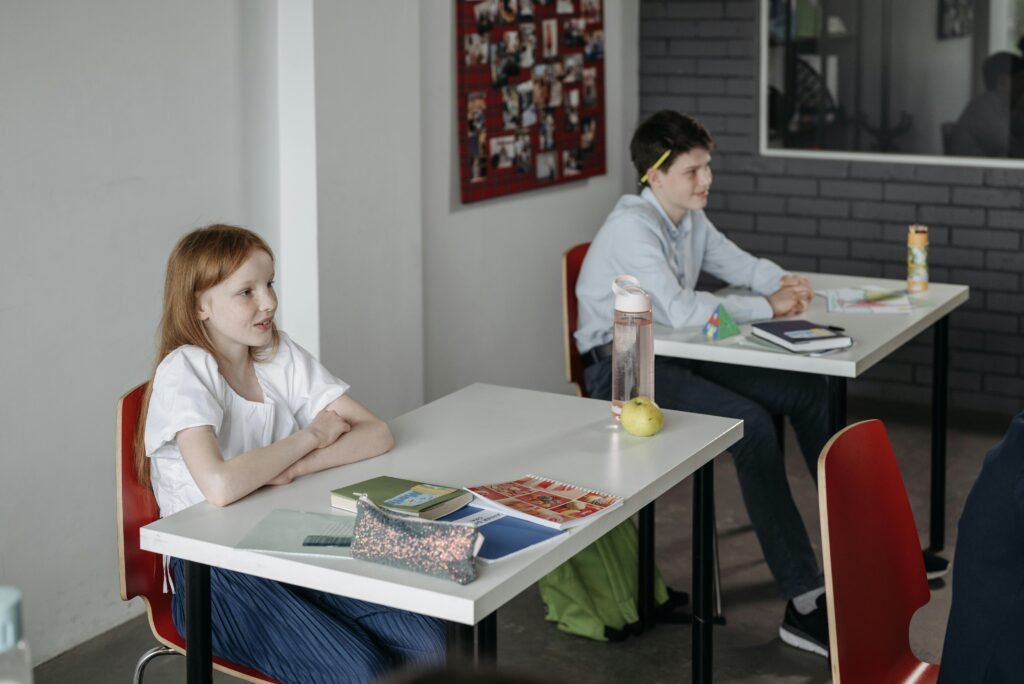
And as screen time comes down and real life goes up, memory—and school success—gets a huge boost.
Conclusion
We live in a digital world. Screens are not going away—and that’s okay. They help us connect, learn, explore, and even relax. But like anything in life, balance is the key.
What the stats show us is clear: too much screen time is quietly hurting our kids’ grades, focus, sleep, motivation, and even confidence. But here’s the good news—small changes make a big difference. Just one less hour of screen time a day can boost attention. Turning off screens before bed can improve sleep and memory. Swapping out screen games for reading or real-life play can build stronger thinking and learning skills.
